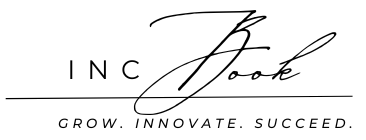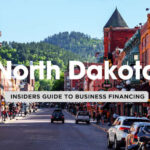Pay-per-click (PPC) advertising promises quick results and a steady stream of customers, but small businesses often find it more challenging than expected. Between competing with industry giants and dealing with spammy clicks, many business owners feel like they’re throwing money into a black hole. Here, we’ll dive into the top 10 PPC complaints from small businesses — and why they might sound all too familiar. Let’s start with the top three!
1. Paying for Competitor Clicks 💸
What’s the issue? Competitors clicking on your ads isn’t just annoying; it’s costly. When a competitor clicks your ad, they waste your budget and drive up your costs without providing any chance of a sale. This can drain your budget quickly, especially in industries with high click costs.
Why it’s frustrating: Every click counts for a small business, and paying for irrelevant clicks means fewer dollars left for actual potential customers. The frustration grows knowing that each of these clicks adds up, impacting your return on investment.
What you can do: To minimize competitor clicks, try setting up geographic restrictions (if applicable) or using negative keywords. Some ad platforms also have automated systems to detect suspicious clicks, so make sure to monitor and report anything unusual.
2. Bot and Fake Clicks 🤖
What’s the issue? Bots and click farms don’t care about your products or services, but they do eat up your PPC budget. Fake clicks from bots are a persistent problem, making it harder for ads to reach real people and generate genuine leads. This issue is especially frustrating for small businesses with limited budgets.
Why it’s frustrating: When you’re paying per click, every bot click is like throwing money down the drain. These clicks don’t convert into leads or sales, meaning small businesses pay for zero return. Plus, distinguishing real clicks from bot activity can be difficult, adding another layer of complexity.
What you can do: Use click fraud prevention tools and monitor your analytics for any unusual spikes. If you notice a high volume of short-click times (where people leave almost immediately), it might signal bot activity, which you can report to the ad platform.
3. Sky-High Bidding Costs 💰
What’s the issue? Competing against larger companies with deeper pockets can make it feel impossible to win ad space. Certain keywords, especially in competitive industries, can cost several dollars (or more) per click. For small businesses, these costs quickly add up, leaving little room in the budget for experimenting with other keywords or strategies.
Why it’s frustrating: Small businesses often can’t outbid big brands for top keywords, which means their ads might not even get seen. When they do bid, it drains their budget faster, limiting campaign reach. This struggle can make PPC feel inaccessible or ineffective.
What you can do: Focus on long-tail keywords that are less expensive but still highly relevant. Long-tail keywords tend to have lower bidding costs and are more specific, which can attract more qualified leads. Testing different keyword strategies also helps to find a budget-friendly fit.
4. Low-Quality Clicks from Non-Targeted Audiences 🧐
What’s the issue? Sometimes, PPC ads attract clicks from people who aren’t interested in actually buying. These could be users who accidentally click on the ad, people browsing with no intent to buy, or those who don’t fit your target customer profile at all. Each click eats into your budget without leading to conversions.
Why it’s frustrating: For small businesses, every dollar matters. Spending money on clicks that don’t convert feels like a waste, especially if these clicks come from users who are unlikely to ever become customers. It can lead business owners to question whether their PPC strategy is reaching the right people.
What you can do: Adjust your audience targeting settings and test different ad copy to make sure your messaging speaks directly to your target customer. Adding negative keywords can also help filter out irrelevant clicks from users who aren’t a good fit for your offer.
5. High Bounce Rates After Clicks 🚪
What’s the issue? A high bounce rate means users are clicking on your ad but then leaving your website almost immediately. This usually indicates that something in the ad didn’t match up with the landing page or that the site experience wasn’t what the user expected. It’s a common complaint for small businesses because they end up paying for clicks without getting meaningful engagement.
Why it’s frustrating: Paying for clicks that lead nowhere can be discouraging, especially for businesses hoping for conversions or at least some engagement. A high bounce rate suggests there’s a disconnect between the ad and the landing page or that the landing page needs improvement.
What you can do: Make sure your landing page matches the ad’s promise and is optimized for fast loading and ease of use. Try A/B testing different versions of your landing page and adjust ad copy to better align with the content users will find when they click.
6. Complex and Confusing Analytics 📊
What’s the issue? PPC platforms often come with detailed analytics, which is great for advanced users but can be overwhelming for small business owners who don’t have the time to learn every metric. Many find it hard to understand which metrics actually matter, making it difficult to tell whether their campaigns are truly effective.
Why it’s frustrating: Small businesses don’t always have the resources for in-depth PPC analysis, and when data is confusing, it’s easy to miss important insights or misinterpret campaign results. Owners often feel they’re in the dark about whether they’re getting a return on their investment.
What you can do: Focus on a few core metrics, like click-through rate (CTR), conversion rate, and cost per conversion. Consider using analytics tools that provide summaries or look into hiring a freelancer for campaign analysis if possible.
7. Unexpected Ad Spend Due to Confusing Settings 💸
What’s the issue? PPC platforms offer a lot of flexibility, but their settings can be confusing, leading some small business owners to accidentally overspend. Mistakes like setting too high a daily budget, accidentally enabling ads in regions they don’t serve, or misunderstanding bidding options can cause ad costs to skyrocket unexpectedly.
Why it’s frustrating: Small businesses often work with tight budgets, so seeing an unexpected bill for ads can be a nasty surprise. Owners might feel discouraged or wary about using PPC in the future, especially if they can’t pinpoint where they went wrong.
What you can do: Start small with your daily budget and review your settings regularly. Set up alerts to monitor spending, and check region settings, bid limits, and ad scheduling to ensure you’re only paying for clicks that are truly valuable. Taking advantage of budget caps or limits can help avoid surprises.
8. Limited Support from Ad Platforms 📞
What’s the issue? Many small businesses find it difficult to get adequate support from ad platforms, especially when they’re not spending at levels that warrant a dedicated account manager. When technical issues arise, or specific questions come up, finding answers can feel like navigating a maze.
Why it’s frustrating: Without sufficient support, small business owners may feel abandoned by the very platforms they’re investing in. Slow responses or generic advice can lead to wasted time, lost opportunities, and missed budgets.
What you can do: Take advantage of available resources, like platform-specific forums, online courses, or third-party PPC consultants who can answer your questions and provide support. If budget allows, consider working with a PPC management service for ongoing campaign oversight.
9. Poor Quality Score Affecting Ad Placement 📉
What’s the issue? Ad platforms use Quality Scores to evaluate and rank ads, and a low Quality Score can lead to higher costs and fewer impressions. Factors affecting Quality Score include ad relevance, expected click-through rate, and landing page experience. Small businesses with limited resources may struggle to optimize these factors, resulting in reduced ad visibility.
Why it’s frustrating: Higher bids alone don’t guarantee good ad placement if the Quality Score is low, which makes it even harder for small businesses to compete. Plus, figuring out which factors are impacting the score can be a guessing game.
What you can do: Focus on improving your Quality Score by ensuring ad relevance, optimizing landing pages for user experience, and refining keywords to closely match user intent. Google’s Ad Quality Score diagnostics can offer clues on what needs improvement.
10. Constantly Rising Click Costs 📈
What’s the issue? PPC costs tend to increase over time as more businesses compete for ad space, especially in popular industries. Rising click costs can price small businesses out of certain keywords or markets, making it difficult to keep their ads competitive without inflating the budget.
Why it’s frustrating: Small businesses often start with a modest ad budget, so rising costs can limit their reach or make PPC seem unsustainable. Competing with larger companies on popular keywords becomes harder as costs rise, and it can feel like there’s no way to break through.
What you can do: Experiment with less-competitive long-tail keywords and focus on local or niche terms. Running ads on platforms with lower bidding costs, like Bing or social media, can also provide more budget-friendly options.



